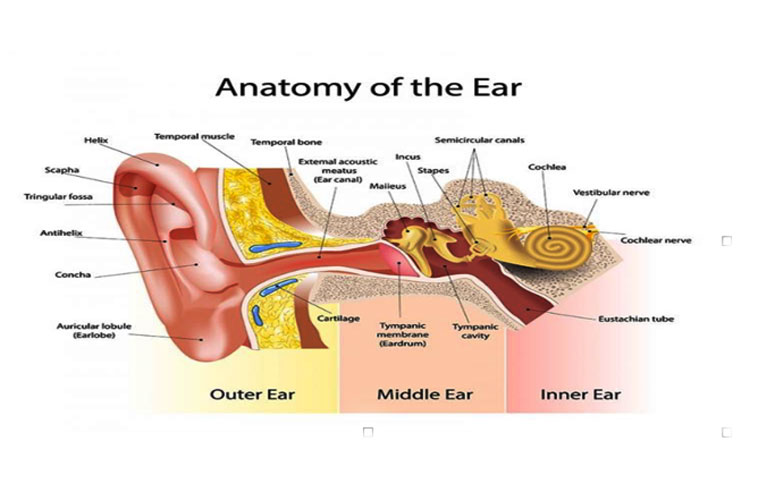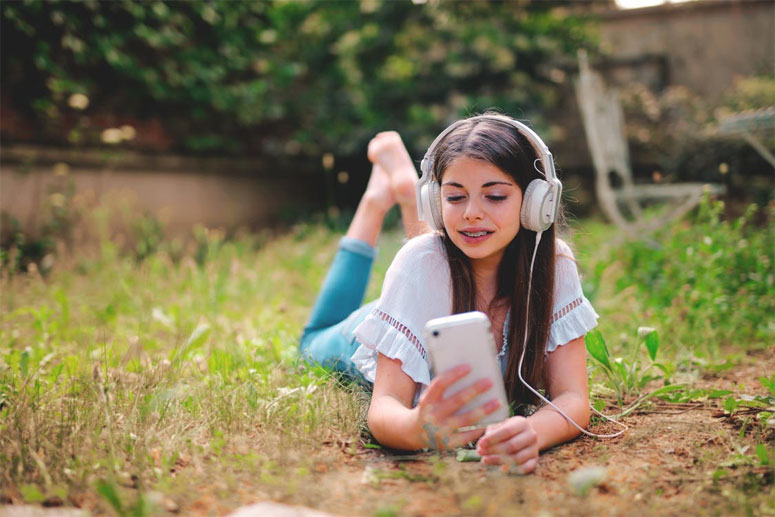We must listen to hearing problems and loneliness in this silent epidemic
According to World Health Organization director general Dr. Tedros Adhanom Ghebreyesus, “As we respond and recover from the pandemic, we must listen to the lessons it is teaching us, including that we can no longer afford to turn a deaf ear to hearing loss.”
Every year World Hearing Day is celebrated on March 3. This year was made more significant by the release of the World Report on Hearing. This report highlighted the magnitude of hearing loss, which according to WHO now affects 400 million people worldwide, including 34 million children who live with disabling hearing loss affecting their health and quality of life.
Every sound in the environment is perceived by our sense of hearing. Normal hearing allows us to communicate, express our ideas and also learn.
There are many causes of hearing loss. Half of these causes can be prevented, such as ear infections, exposure to noise and chemicals, infections that are preventable with vaccines such as mumps and measles.
There are many causes of hearing loss. Half of these causes can be prevented, such as ear infections, exposure to noise and chemicals, infections that are preventable with vaccines such as mumps and measles.
With today’s propensity to listen to loud music with personal music players, up to one billion young people are putting themselves at risk for permanent hearing loss.
Many are aware that people who are born deaf are not able to speak and can only communicate by gestures and signs. We have grandparents who ask us to repeat what has just been said, seen in age-related hearing loss or “presbycusis.”
But reviewing how we hear may illustrate other mechanisms of hearing impairment.
Sounds travel through the outer ear canal, setting the tympanic membrane into vibrations that are carried by three small ossicles (the malleus, incus, and stapes) in the middle to the inner ear or cochlea, where the motion of fluid allows the hair cells to release the chemicals needed to generate electrical impulses in the cochlear nerve to travel to the brain.

Problems in the outer, middle, or inner ear, as well as the nerve, can cause hearing loss. Colds are followed by eustachian tube problems that may cause otitis media, or middle-ear infections and hearing loss due to poor conduction of sounds.
Many years ago, the Philippine National Ear Institute (PNEI) researchers worked with the Department of Education and taught teachers how to examine the ears of about 4.7 million elementary students using a regular penlight and hearing test using a tuning fork (which costs only P250). With the propensity of smartphone apps it may now be possible to screen for hearing loss using newer technology.
About 20 percent of the children had impacted wax or cerumen, a very common cause of hearing loss aggravated by the common use of cotton tip swabs (Q-tips) to clean the ear canal.
In older adults with increased dryness of the ear canal, this can even be more common. It is to be emphasized that our ear canals were designed to “self-clean” and so one just needs to wipe the outer ear with a wet towel after a bath and avoid the use of cotton swabs.
Among the myriad of conditions that can affect hearing, the most life-threatening is the presence of benign tumors that juxtapose the ear and the brain, or what is called “vestibular schwannoma.” Though these are benign tumors, unabated growth can lead to vertigo or balance problems and increased risk of death.
Thus, tinnitus or buzzing in the ear, progressive hearing loss in just one ear or vertigo/ dizziness should always merit an exhaustive evaluation by an ear doctor. One must definitely not think of wearing any hearing aid without the benefit of a medical evaluation followed by a formal hearing test. The specialist may opt to request a computed tomography (CT Scan) or MRI (Magnetic Resonance Imaging) of the ear and brain to rule out such conditions.
What can be done to prevent hearing loss? Across one’s lifespan, these would include maternal nutrition, hygiene and breastfeeding, good ear hygiene with avoidance of Q-tips, tobacco avoidance, good nutrition and healthy lifestyle, immunization and avoiding exposure to loud sounds and loud noise.
Another more common cause of hearing loss is infections. Our country still has one of the highest prevalence of otitis media or infection in the middle ear. Children less than five years old are most affected following a cold.
Among marginalized and indigenous populations, the common notion that “luga” or ear discharge is just part of growing up must be countered by better education on ear care. A PNEI study published in Nature Genetics in 2015 showed a genetic mutation in AM2L1, rendering the indigenous tribe with poor defenses against pathogens in the middle-ear mucosa.
About 21,000 people around the world die each year as a result of otitis media complications such as mastoiditis, meningitis, and brain abscess. While such infections mostly affect those below the age of five, the elderly population can also be affected.
Loud sounds above 80 decibels (db) heard for periods longer than 40 hours a week can cause noise-induced hearing loss. In both occupational (military, shipbuilding, factories, agriculture, entertainment industries) and recreational settings like listening through headphones, even a 15-minute exposure to 100 db of music equates to an eight hours a day at 85 db for an industrial worker. It has been estimated that 40 to 50 percent of people aged 12-35 years may be at risk due to noise-induced hearing loss.

One of the warning signs of such damage to the inner ear is the perception of tinnitus from the Latin verb “tinnire,” or to ring. This tinnitus can be severe enough to cause anxiety and depression. It has been reported that such bothersome tinnitus can be experienced by three to 30 percent of the population.
Age-related hearing loss affects about 15 percent of people in their 60s, but increases to 50 percent at 80 years of age.
So what can be done to prevent hearing loss?
Across one’s lifespan, these would include maternal nutrition, hygiene and breastfeeding, good ear hygiene with avoidance of Q-tips, tobacco avoidance, good nutrition and healthy lifestyle, immunization and avoiding exposure to loud sounds and loud noise.
What is the impact of unaddressed hearing loss?
In 2019, age-related hearing loss was the third leading cause of global number of years lived with disability (YLD), especially above the age of 70 years. Many aspects of life such as listening and communication can be affected.
The development of speech in children can be delayed when a baby is not given the opportunity of a hearing screen at the age of one month, a diagnostic confirmation of hearing loss at three months and the appropriate intervention at six months.
The Philippines is one of the few countries in the world with a legally mandated newborn hearing screening. Republic Act 9709 or the Universal Newborn Hearing Screening (UNHS) and Early Intervention Act of 2009 were championed by Senators Loren Legarda, Pia Cayetano, Manuel Lapid Jr. and the late Miriam Defensor-Santiago. It was signed into law by then President Gloria Macapagal-Arroyo. Philhealth has coverage for UNHS as part of the newborn baby package.
Even with a unilateral hearing loss, cognition can be greatly affected so developmental milestones should always be monitored in children. Our studies on the cost effectiveness of newborn hearing screening and intervention were recently cited in the World Report on Hearing.
In the context of a low- to middle-income country like the Philippines, such studies are even more important if we are to convince our policymakers to invest financial resources into vital hearing health programs to prevent permanent or lifelong disabilities since effective and timely interventions like hearing aids and cochlear implants are now available.
The effect on education, future employment, and psychosocial development cannot be overemphasized.
COVID-19 and hearing loss
In the midst of this COVID-19 pandemic, the effect of hearing loss can even be more dramatic. With wearing a mask and face shield, the communication disability can worsen. Hearing loss following COVID-19 infections has been reported aside from the loss of smell and taste.
The pandemic has really caused more social isolation and loneliness. Even more affected are those with ear ailments such as hearing loss, tinnitus, and balance disorders.
Most are aware only of the more common symptoms COVID-19 such as fever, cough, headache and sore throat. Sudden hearing loss should prompt an immediate consultation so timely intervention can be done using oral steroids or intratympanic steroids as salvage therapy.
Viral infections or stress itself may contribute to this condition. Medical management is followed by hearing aid amplification when necessary. Should the latter fail, cochlear implantation can be done.
In the elderly, this timely intervention is likewise important to prevent the onset of dementia. There is clear, emerging data regarding the relationship between hearing loss and dementia, as reported by Dr. Frank Lin and colleagues from the Johns Hopkins University.
This pandemic has really caused more social isolation and loneliness. Even more affected are those with ear ailments such as hearing loss, tinnitus, and balance disorders.
It behooves us to pay more attention to the needs of those who suffer from hearing loss. Telemedicine consultations have become more common but even just a simple phone call to check on people can make a big difference. Now more than ever it is high time to give attention to this silent epidemic that has long been affecting so many people.
The youngest Nobel Laureate awardee, Malala Youzafsai, who has suffered from hearing loss herself emphasized that with access to healthcare rehabilitation and technology people with disabling hearing loss can participate equally in education, employment and their communities.
Let us all help prevent hearing loss and allow access to effective interventions for ear and hearing care. This is the only way we can give every person a chance to contribute to a better future for our communities.



